- Home
- Thomas Keneally
Australians, Volume 2 Page 10
Australians, Volume 2 Read online
Page 10
The relationship of the Chinese and the Aborigines, involving Aborigines working for Chinese enterprises, led to sexual contact between the Chinese men and Aboriginal women, sometimes resulting in marriage. The Chinese were accused not only of sexual predatoriness but also of providing opium to the European and Aboriginal communities. In a region where opium moved freely from China to Australia, white employers also gave opium to their black workers.
There were a number of Chinese merchants in Cairns by 1890—a hat maker, a jeweller, a watchmaker. The Chinese lived in their own Chinatown around present-day Grafton Street, and if they fell ill were treated in an aliens’ ward in the hospitals. The Chinese contributed to local charities and institutions in towns like Innisfail and Cairns. Though there was a ban on Chinese travelling first class on coastal steamers, the rule was ignored for the more prosperous Chinese. Wealthier Chinese merchants invited Europeans they knew—generally lawyers, bankers, the local newspaper editor, the inspector of Polynesians and so on—to Chinese New Year banquets. A dinner given by Willie Ming and Ah Young in 1897 was attended by all the white worthies of Cairns.
Stories of similar successes abound. Leon Chong was the leading Chinese citizen in Cairns in the 1890s. He was the manager of the Hop Wah plantation and then founded a citrus growing enterprise. Tam Sie was another prodigiously enterprising merchant. The news of Queensland gold reached his village in southern China magnified by its passage over the wires and from mouth to mouth. He came to the Palmer River goldfields in 1876. After a brief time he took a voyage on a junk to New Guinea to collect the shellfish named trepang or bêche-de-mer, a prized Asian delicacy and aphrodisiac. He returned to Cooktown and sold the bêche-de-mer for an excellent return. Sick from some tropical fever, he was lucky to miss out on the junk’s next journey, for most of the crew were killed by Papuan villagers. He was involved in various enterprises in the chief gold towns of the interior and in the coastal sugar towns. Colonial Sugar Refinery contracted him to clear land for them and he employed 500 men to do it. In December 1887 he left for China, taking some of his profits but leaving behind £4000 worth of property. Back in his home village, Tam Sie found that ‘the lure of Queensland’ took him again, and he returned and even grew rice in the Daintree Forest. He entered into partnership with Sun Kwong Key, the chief banana-exporting company, formed a partnership with Innisfail merchants, and then began his own banana-shipping company. He bought real estate in Cairns and experimented with the growing of rubber and cotton in the hinterland.
To the white community, however, the chief threat remained not only to prosperity or wages but to racial purity. If Europeans were the highest form of humanity, any dilution of whiteness was a violation. William Lane, the great Labor leader and editor of Brisbane’s Boomerang, declared in 1888 that he would rather see his daughter ‘dead in her coffin than kissing a black man on the mouth or nursing a little coffee-coloured brat that she was mother to’.
Travelling from Innisfail to Cairns, a Bulletin commentator who described himself as ‘Bluey’ declared he was forced to journey with two ‘Chows’, a Japanese and six Kanakas. He was horrified to find the port at Cairns full of Chinese sampans selling fruit to the people on the steamer. Cairns was in fact considered a disgraceful town, where white men ate with Chinese, slept with Japanese prostitutes who had been recruited from Nagasaki, and let themselves be outwitted by the Asians. As late as 1941, forty years into the white Commonwealth, the Queensland census showed that 40 per cent of Cairns and nearby Cardwell were still Chinese, Japanese, Manilamen (Filipinos), Sri Lankans and Kanakas.
THE ENNOBLING LAND
To Australians ‘the land’ bespoke sturdiness and fulfilment and a form of holiness. Immigrants from land-starved northern Europe, particularly peasants and working-class people, were infatuated with the promise of land. While industry debased the soul and injured the body, the land would exalt the soul and invigorate the body. Yet though the fable-making of Australia was so preoccupied with ‘the man on the land’ and his family, by 1891 more than half of Australia’s people were living in the cities. This remained the unarguable truth of Australia despite the intent of the Eureka rebels and progressive law makers in the nineteenth century to ‘unlock the land’.
In Victoria, after the fall of the pro-squatter Nicholson government in 1861, a group of reformers led by Richard Heales (a temperance leader slowly dying of tuberculosis) and John Henry Brooke (another Englishman, who was popular for granting annual occupation licences to selectors) won twenty-two of the twenty-seven goldfield seats and were able to form a government. In this government Charles Gavan Duffy, the former Irish rebel so often charged with sedition and tried for it in his own country, but now an urbane member of the Victorian Legislative Assembly, framed a Land Act which became law in 1862. City workers, former miners, shearers and landless labourers could select a minimum 40 acres (just over 16 hectares) of land that was not designated as gold-bearing or did not have stands of red gums. They were required to occupy such land, live on it, put at least 10 per cent of it under crop and build improvements equivalent to £1 ($2) per acre. The annual lease payments were high enough to allow the land to be handed over by the Crown to the selector outright at the end of eight years.
Throughout the bush in New South Wales and Victoria people crowded into the land offices set up by the colonial governments in all the major centres—in Yass in New South Wales, in Hamilton in the Western District. Here the former Scots crofter or factory labourer, the Irish bounty emigrant in whom the appalling land system of his country had induced a ferocious thirst for land, and the English from the Midlands and north and poorer parts of London crowded in, acquiring maps, hungrily eyeing them, getting on horseback to inspect the available lots. How bright futures must have looked then, in the early 1860s, with the land laws passed, and men possessing the franchise. And the residency requirement would surely prevent the squatters from using proxies or dummies. Duffy, always a city dweller himself, whether editing the rebellious Nation newspaper in Dublin or shining as an urbane Melburnian, hoped to open up 4 million acres (1.6 million hectares) in the first three months. Ireland could not be reformed. Victoria seemed gloriously reformable.
Most land acts passed in other colonies partook of similar clauses, and were motivated by the same intent as Duffy’s. Under later acts, for example, selectors were able to claim land that had not yet been surveyed and thus was not in the squatters’ sights, and call for it to be surveyed after they had taken it up. But successive land acts in all the colonies were never able fully to thwart the squatters or, above all, help selectors come to terms with the fierce demands of the selected land. Steele Rudd, selector’s son, would give the reader an idea of how hard it was even to clear land in his Dad and Dave stories set on a selection on the Darling Downs in Queensland. When north-east Victoria (or Kelly Country, as it would become) was opened up for selection, three squatting partnerships or families increased their holdings by a total of 210 000 acres through using proxies and moving quickly to claim the best ‘unlocked’ land. In their minds, they had been the first there, had borne the dangers and discomforts, so why not tie up what interlopers would otherwise take?
Sir Charles Wentworth Dilke, a future British radical politician and visitor to Australia, would write, ‘The squatter is the nabob of Melbourne and Sydney, the inexhaustible mine of wealth. He patronises balls, promenade concerts, flower shows, he is the mainstay of the great clubs, the joy of the shopkeepers, the good angel of the hotels; without him the opera could not be kept up, and the Jockey Club would die a natural death.’ Dilke found that squatters were quite willing to read about democracy as long as it happened elsewhere. ‘Democracy, like Mormonism, would be nothing if found among Frenchman, or people with black faces, but it is at first sight very terrible when it smiles on you from between a pair of rosy Yorkshire cheeks.’
Duffy’s successor, the Melbourne solicitor James Grant, had the same e
xperience as Duffy and his good intentions were also frustrated. He guided a law through both houses which gave him administrative power to cancel any suspect selection. Generally amiable, Grant had a weakness for drink that drove him to heights of reckless passion, and perhaps drink as well as conviction had a hand in a speech he gave at Camperdown, Victoria in 1865. As reported by a journalist, he declared ‘that he carried a guillotine in his heart—and swore by his Maker that he would cut off the heads of the squatters rather than that they should have the land’.
Jack Robertson, the New South Wales Minister for Lands, was himself a considerable landowner. A large earthy Scot, this aficionado of the profane joke, who was described as drinking, swearing and dressing like a man from the bush, was the leader in the fight for Free Selection in New South Wales. As a tall, red-haired young man he had been an explorer of the Namoi and Darling rivers, and set up as a squatter on the Namoi. Unlike many of his brethren, he realised that the land he leased belonged to the Crown and thus to the community.
In March 1860, all the candidates who openly opposed land reform were defeated in a colonial election and Robertson came to the premiership. This election was considered the end of the old colonial order of things, when former colonial officials and their friends, such as Edward Deas Thomson, Colonial Secretary from the old quasi-autocratic days, and Stuart Donaldson, squatter and friend of squatters, dominated Parliament. Robertson was in his own way an enlightened conservative, however, like so many progressives in the nineteenth century. He believed that if miners in particular did not get land, they ‘might become dangerous to the public’s safety’.
Robertson would deliberately retire from the premiership in 1861 so that he could further concentrate on getting his land bills through the House. When he could not persuade the Legislative Council to pass them, he resigned from the Assembly so that he could be appointed to the Council and argue the bills through, and persuaded the governor, Sir John Young, to appoint like-minded people to the Council or else his cabinet, still in place, would have to resign. When it seemed that Sir John Young might appoint wild radicals to the Council, nineteen conservatives furiously resigned, and left the Council without a quorum. But the new members were appointed, and the land bills were passed and came into operation in October that year.
Very few of Jack Robertson’s supporters understood the complexity of what was going to happen as a result of the bills, which allowed that unsurveyed land could now be selected and bought freehold in 320-acre (130-hectare) lots at £1 per acre on a deposit of 5 shillings per acre, that is, for £80, the balance to be paid within three years on the basis of an interest-free loan of three-quarters of the price. Again, those who acquired the land had to take up residence on it.
*
Queensland introduced selection to pay for the railways it had to build. In this state, too, the normal pieties about the holiness of the land were uttered. The Brisbane Courier of 23 March 1872 believed that farmers ‘lived nearer God’, and the Anglican Archbishop of Brisbane said that a man with a few acres was less likely to turn into a socialist. The best land for selection was on the Darling Downs, where conditions seemed better than in most of that either too-dry or too-tropical colony. The Selection Acts produced a great number of selector families in the region.
The importance of land in the mind of South Australians had the added sanctity of having the old Edward Gibbon Wakefield vision of land settled by godly yeoman added in. In South Australia there had always been a concern in the city that pastoralism would prevent the growing of enough food. But through selection, South Australia became in fact an exporter of wheat to South Africa and England, as well as to other Australian colonies. Henry Strangway was a Somerset man who as a boy had visited an uncle in South Australia and then, having been admitted to the Bar at the Middle Temple in London in 1856, returned to Adelaide in early 1857. His legislation, which was passed in January 1869, provided for the creation of agricultural areas and of purchases on credit of up to 640 acres (259 hectares) with a deposit of 25 per cent and with four years to pay. He was applauded in his colony as the ‘St George of Land Reformers’, and selectors took up blocks, particularly along the Murray River.
Subsequent history tells how resistant to Strangway’s idea South Australia’s rainfall and topography were. Into the 1880s, the movement would be further influenced by Wesleyan temperance progressive George Witherage Cotton of the Legislative Council, and by his book Small Holdings: The Mainstay of Individuals and Nations. Witherage believed there were still not enough South Australians on the land. He founded a Homestead League which bought up blocks for occupation by settlers. He was backed up by favourable legislation to make it all more possible, but by 1896 only 4 per cent of the state’s population, about 13 000 people, were ‘block holders’, that is, people who had received the Homestead League’s loans to start small farms.
ON OUR SELECTION
Henry Lawson, a selector’s son from Eurunderee in the Central Ranges of New South Wales, knew something of the reality of selecting, the husband often having to go away droving to supplement income. He wrote of a ‘Land where gaunt and haggard women live alone and work like men/Till their husbands gone a-droving will return to them again’.
Another who knew of that reality was the Queenslander Steele Rudd. His true name was Arthur Hoey Davis, his father a Welsh blacksmith and his mother, Mary Green, one of the Irish orphan girls shipped to Australia in the late 1840s from the workhouses of famine-stricken Ireland, in her case from the Tuam workhouse in Galway. Arthur—or Steele Rudd, as he is known to history—was born in 1868 in Stanthorpe, where his father mined for tin. Under the Land Settlement Act the Davises took up a selection of 160 acres north of Toowoomba in country heavily covered by timber. The setting-out of the family for their selection must have been a thousand if not ten thousand times repeated in Australia. ‘We came from Stanthorpe on Jerome’s dray—eight of us, and all the things—beds, tubs, a bucket, the two old cedar chairs with the pine bottoms and backs that Dad put in them, some pint pots.’ The house they built was ‘slabbed’, with a shingled roof, and was divided into two rooms. ‘The floor was earth, but Dad had a mixture of sand and fresh cow dung with which he used to keep it level. About once every month he would put it on; and everyone had to keep outside that day till it was dry . . . [The] slabs were not very close together, we could easily see through them anybody coming on horseback.’
The requirement for secure title to the farm involved improving the land, and thus felling the box and ironbark trees which rose all around the hut. This timber was the reason the land had not been selected earlier. The first objective was to clear some 4 acres and put in corn, but this turned into fierce labour and the trees, once felled, ‘lost all their poetry’. When the character Dave (often depicted as a buffoon in standard Australian jokes but taken seriously enough in Rudd’s work) asked his father why they ‘didn’t take up a place on the plain, where there were no trees to grub and plenty of water, Dad would cough as if something was sticking in his throat, and then curse terribly about the squatters and political jobbery’.
In the world according to Rudd, the women laboured like drudges and were afflicted by loneliness, want and fear of losing the place. Concern about money was constant. ‘I can remember how Mother, when she was alone, used to sit on a log, where the lane is now, and cry for hours.’ If Rudd is writing about his own mother—and why would he not?—he is not depicting some pampered woman, but a woman who had known since childhood nothing but a succession of harshness. Yet selection was nearly too much for her.
Children laboured at blistering work, such as shelling corn. Dad went to the produce merchant to sell it and found the lot, after his bill for food and stores was deducted, was worth £3. ‘Dad went home and sat on the block and got depressed. Ultimately he showed the invoice to Mum and she did the same.’ So kangaroo stew became the staple. Dad was reduced to roasting a slice of bread
on the fire till it was like a coal, then pouring boiling water over it and letting it draw. ‘That served as coffee for a time.’ At the right time Dan, an older son, turned up with money earned in shearing. Child labour on and outside the farm was so desperately needed by the family that it was remarkable if a child could be spared many years for education. Rudd attended Emu Creek school and, because he was a clever boy, was able to stay till he was twelve.
In Rudd’s world, the real world of the Queensland selection, Rudd’s family were, like their class, an enduring people. But frequently endurance was not enough. Australia ate people like the Rudds alive. ‘You’ll ride all over it filled with the proud spirit of ownership,’ wrote Rudd, ‘. . . even the wild flowers and darn stones’ll be yours! How you’ll admire it all!’ But possession of it hung by a thread.
NORTHERN TERRITORY PASTORALE
Patterns of settlement in Northern Australia were unique. Wentworth D’Arcy Uhr had never been a lover of the Aborigine, and an uncle of his had been murdered by natives a year after his birth. While overlanding cattle and horses to meat-hungry and horse-needy Palmerston from Rockhampton in 1872, Uhr and his companions had three clashes with natives, the first near the Territory border west of Bourketown. The next tribe encountered to the west, the Garrwa, were more amenable to the passage of the cattle and horses through their country and did not have to confront the Snider and Westley Richards guns of the party. Passing west into the country of a different tribe, the Yanyuwa, the party kidnapped a black child they named Pilot. This was a common means of recruiting a pliable guide. Further on, the party saw their leading cattle begin to stampede back on them, and on galloping to the front they were attacked with a shower of spears. They retaliated with brisk fire, but even then the natives were not easily persuaded to retire.

 Confederates
Confederates Flying Hero Class
Flying Hero Class Gossip From the Forest
Gossip From the Forest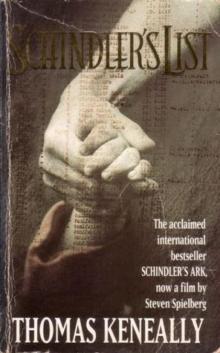 Schindler's List
Schindler's List Bring Larks and Heroes
Bring Larks and Heroes Australians: Flappers to Vietnam
Australians: Flappers to Vietnam The People's Train
The People's Train Crimes of the Father
Crimes of the Father A Family Madness
A Family Madness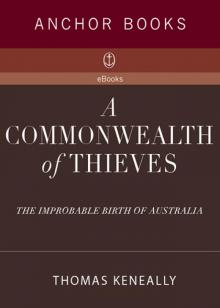 A Commonwealth of Thieves
A Commonwealth of Thieves Ned Kelly and the City of Bees
Ned Kelly and the City of Bees A River Town
A River Town Bettany's Book
Bettany's Book Blood Red, Sister Rose: A Novel of the Maid of Orleans
Blood Red, Sister Rose: A Novel of the Maid of Orleans Victim of the Aurora
Victim of the Aurora American Scoundrel American Scoundrel American Scoundrel
American Scoundrel American Scoundrel American Scoundrel Three Cheers for the Paraclete
Three Cheers for the Paraclete Australians: Origins to Eureka: 1
Australians: Origins to Eureka: 1 The Power Game
The Power Game The Chant Of Jimmie Blacksmith
The Chant Of Jimmie Blacksmith The Daughters of Mars
The Daughters of Mars Searching for Schindler
Searching for Schindler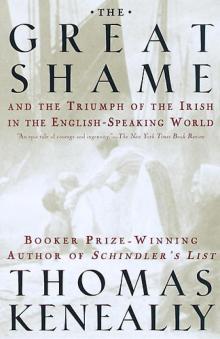 The Great Shame: And the Triumph of the Irish in the English-Speaking World
The Great Shame: And the Triumph of the Irish in the English-Speaking World Abraham Lincoln
Abraham Lincoln The Widow and Her Hero
The Widow and Her Hero Eureka to the Diggers
Eureka to the Diggers Shame and the Captives
Shame and the Captives The Survivor
The Survivor Jacko: The Great Intruder
Jacko: The Great Intruder The Book of Science and Antiquities
The Book of Science and Antiquities Homebush Boy
Homebush Boy The Playmaker
The Playmaker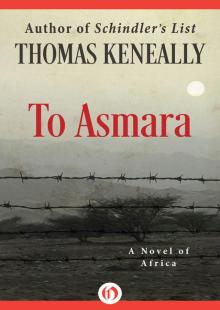 To Asmara: A Novel of Africa
To Asmara: A Novel of Africa A Woman of the Inner Sea
A Woman of the Inner Sea The Tyrant's Novel
The Tyrant's Novel Australians
Australians Schindler's Ark
Schindler's Ark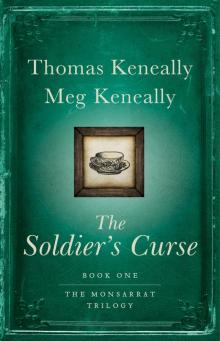 The Soldier's Curse
The Soldier's Curse Australians, Volume 3
Australians, Volume 3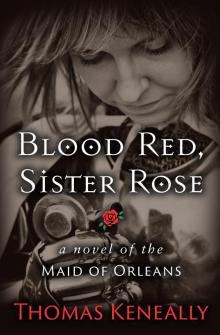 Blood Red, Sister Rose
Blood Red, Sister Rose A Victim of the Aurora
A Victim of the Aurora The Unmourned
The Unmourned Australians, Volume 2
Australians, Volume 2 To Asmara
To Asmara